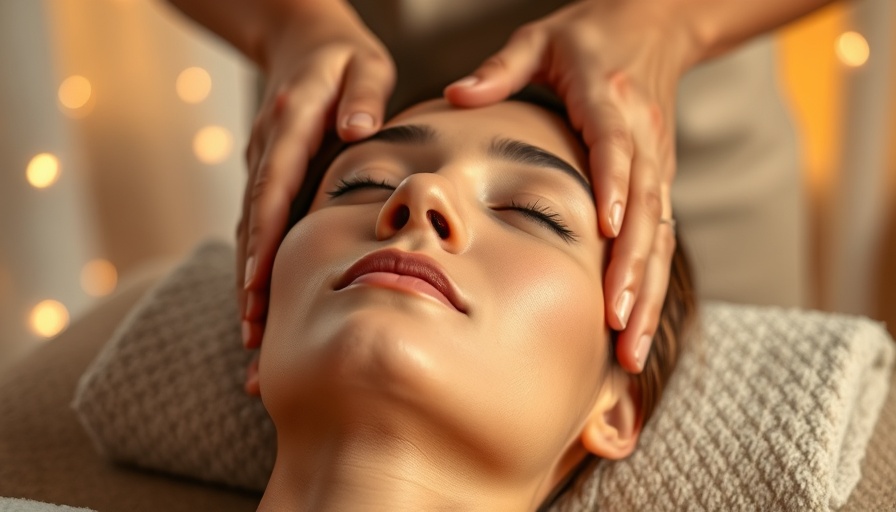
Understanding Skin Discoloration: The Facts You Need
Skin discoloration is a common issue that affects nearly everyone at some point in their lives, whether it's due to natural aging, hormonal changes, or external factors like sun exposure. Understanding the underlying causes of skin discoloration is essential for effective treatment. At its core, discoloration results from an overproduction of melanin, the pigment that gives skin its color. The triggers can range from genetics and hormonal changes to injuries and environmental factors.
The Four Types of Skin Discoloration: What You Need to Know
As we explore the four main types of skin discoloration, it becomes clear that taking a tailored approach to each can lead to better results. Here’s a closer look:
1. Melasma
Melasma is characterized by large, dark patches of brown or gray skin, typically found on the forehead, cheeks, or around the mouth. This condition predominantly affects pregnant women, individuals going through hormonal therapy, and those who use birth control pills. The first step in addressing melasma is to avoid aggressive treatments that can further inflame the skin. Instead, calming the skin and treating it gently can lead to better outcomes.
2. Post-Inflammatory Hyperpigmentation (PIH)
PIH occurs after skin trauma, such as breakouts, cuts, or even bug bites. The spots can be dark red or purple, serving as reminders of previous blemishes. To combat PIH, it’s vital to implement preventive strategies that minimize the occurrence of breakouts in the first place. Consulting with a skincare professional can help devise an effective plan tailored strictly to your skin type.
3. Age Spots
These flat, brown spots often emerge due to sun exposure and aging. They are commonly found on areas exposed to sunlight, like the face, hands, and arms. To mitigate age spots, it's crucial to adopt sun protection habits, including daily SPF application and the use of ultraviolet (UV) blocking skincare products.
4. Freckles
Freckles are small, often tan or light brown spots that may appear in fair-skinned individuals, especially after sun exposure. Unlike other types of discoloration, freckles are genetically determined and can be enhanced by UV radiation. Protective measures and targeted treatments can help maintain their appearance.
Strategies for Effective Treatment
Understanding how to treat each type of skin discoloration effectively is essential for achieving that coveted "glass skin" look—radiant, smooth, and even-toned. Here are some practical strategies to help you get started:
Calm and Soothe Your Skin
The key to fading melasma is to calm overactive pigment cells. Gentle products with soothing ingredients like aloe vera and chamomile can help reduce inflammation and prevent excess melanin production.
Utilize Targeted Treatments
For post-inflammatory hyperpigmentation, consider targeted treatments with ingredients like vitamin C, retinoids, or azelaic acid. These can help to lighten existing spots and prevent new ones from forming. Always consult a dermatologist to ensure these treatments are suitable for your skin type.
Incorporate Professional Procedures
If you're looking for faster results, professional treatments like chemical peels, laser therapy, and micro-needling can be effective. However, it’s important to consult with trained professionals to determine the best course of action tailored to your specific skin concerns.
Building an Effective Skin Care Routine
To complement these treatments, creating a consistent skincare routine is essential. Here’s how:
- Cleanse: Start with a gentle cleanser to remove impurities without stripping your skin of its natural moisture.
- Treat: Apply serums targeted for discoloration, such as those containing niacinamide or alpha arbutin.
- Moisturize: Choose a lightweight moisturizer to maintain hydration without clogging pores.
- Protect: Daily sunscreen is non-negotiable. Apply a broad-spectrum SPF to prevent new dark spots from forming.
Maintaining Your Results
Once you achieve your desired skin tone, it's essential to maintain your results. Regular follow-ups with skincare professionals can help monitor progress and make necessary adjustments. Additionally, staying consistent with your skincare routine will support long-term health and appearance of your skin.
Each type of discoloration presents unique challenges, but with the right strategies and a proactive approach, you can achieve brighter, more even-toned skin. Investing time in understanding your skin and working with professionals will yield the best outcomes. Remember, beautiful skin doesn't just happen overnight; it's the result of dedication and the right care.
 Add Row
Add Row  Add
Add 



Write A Comment